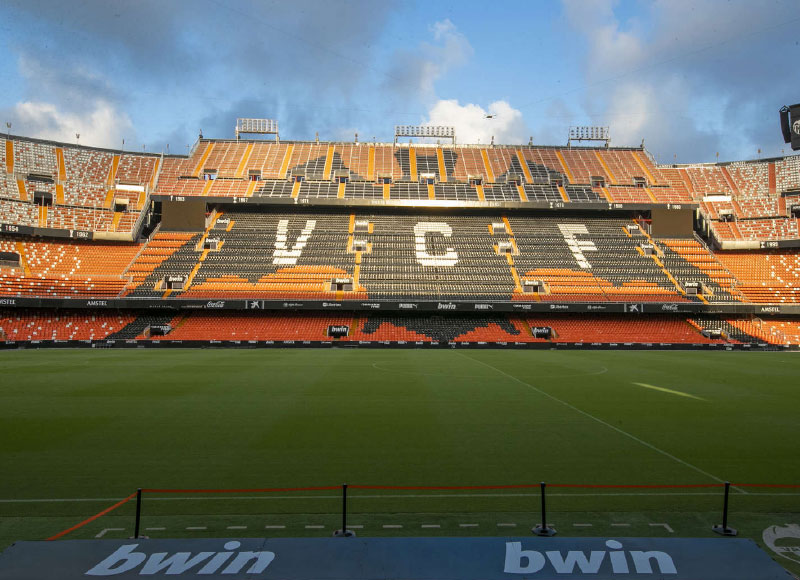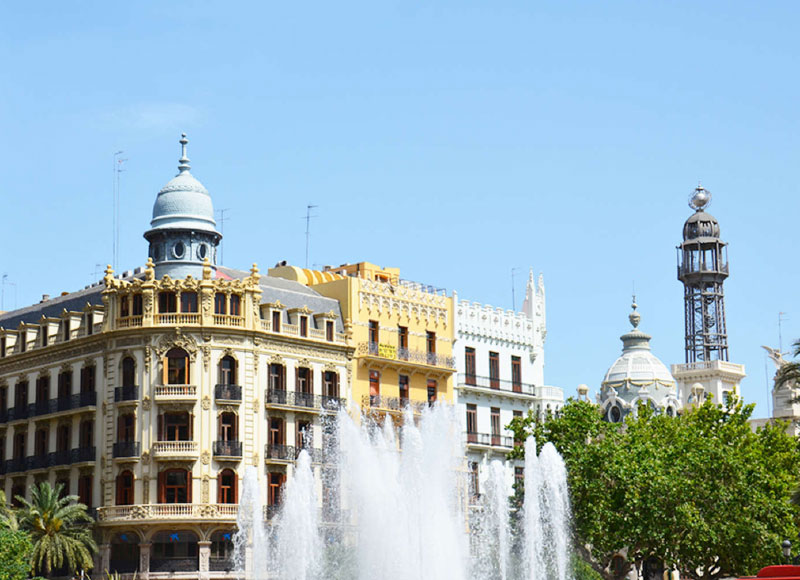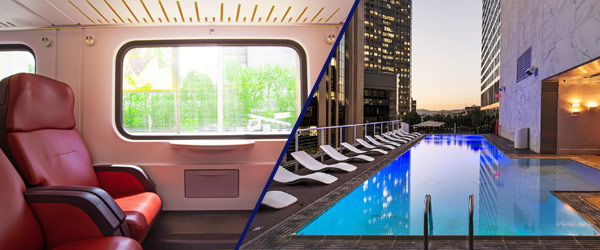
Valencia
Valencia
THE CITY

Past, present and future melt together in Valencia. In the heart of the city is the Cathedral complex, around the Plaza de la Virgen, with its twenty-one centuries of history. From the Carmen district to the colourful Plaza del Ayuntamiento, the vitality of the Mediterranean can be felt in its historic buildings, streets and plazas, and in its people. Valencia also leaves space for nature in the heart of the city, in the Turia Gardens, an immense, ten-kilometre park that crosses the city of flowers from west to east. And the sea is ever present, from El Cabañal to El Saler, and its fertile soils, which symbolise a great part of its culture, associated with the Valencian gastronomic tradition, where paella is the undisputed queen of dishes. Valencia is a city of contrasts which blends the modernity of the Ciudad de las Artes y las Ciencias, the City of Arts and Sciences, with its traditions of fire and gunpowder which light up the Fallas.
SUNSET AT ALBUFERA DE VALENCIA
If you are seeking nature, then Albufera de Valencia is for you. It is the largest lake in Spain and one of the most important wetlands on the Iberian Peninsula. It is a site of great ecological interest, where unique species of water birds pass the winter months. And to see it up close, you can take a boat around the Albufera and see the reddish gold tones of the sunset over its waters.
ESSENTIALS
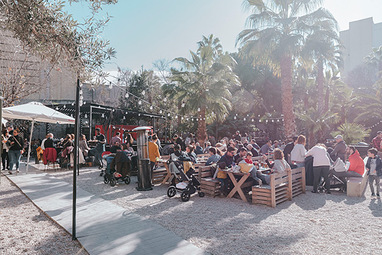
You can start by exploring the thousand-year-old district of Carmen, and then go on to stroll through the streets flanked by mediaeval buildings such as the Quart Towers and the Serranos Towers.
The Plaza de la Virgen and its Cathedral complex bear no less than twenty-one centuries of history on their facades in the very heart of the city. Here you will find treasures like the Cathedral of Valencia, the Miguelete, the Basilica of the Virgin and the Almoina. Dive into one of the biggest markets in Europe, the Central Market, housed inside a jewel of pre-modernist architecture, and visit one of the most representative examples of civil Gothic architecture in Europe, the Lonja de la Seda, or Silk Exchange, declared a UNESCO World Heritage Site.
The Plaza del Ayuntamiento, with its central fountain and traditional flower stalls, is surrounded by some of the most representative buildings and sites in the city, including the Bullring, the North Station, the Post Office, the Plaza Redonda and Valencia City Hall. It is famous for being the place where all of the “mascletàs” (spectacular firecracker shows) are held during the Fallas.
Along the old course of the River Turia are the Turia Gardens, a green zone that crosses the city from west to east. You can see it by bicycle or from a train. An essential stop is at the Palau de la Música, or Palace of Music, and enjoy the singular bridges that cross it from north to south. The Cabecera Park houses Bioparc Valencia, a latest-generation immersion zoo. As you explore the more than 100,000 m² of the zoo, you will be submerged in the wild habitats that it recreates, such as the Savannah, Madagascar and Equatorial Africa, and you will be able to enjoy, with practically no barriers, the diverse landscapes where different species live.
The end of this visit to the Turia Gardens is the City of Arts and Sciences. With futuristic architecture designed by the Valencian, Santiago Calatrava, it has an IMAX cinema in the Hemisfèric, Europe’s largest aquarium in the Oceanogràfic, an instructive, interactive exhibition in the Prince Felipe Science Museum and the most avant-garde opera at the Queen Sofia Arts Centre. And there are more can’t-miss visits: to the Assut de l’Or Bridge and the Agora, the main venue of the Open 500 tennis tournament.
And don’t miss the chance to bathe on the beaches of Valencia. Over fifteen kilometres of beach running from El Cabañal to El Saler bring colour, flavour and a maritime atmosphere to this capital of the Mediterranean Sea. Just a few minutes from the city centre, you will find the Las Arenas and Malvarrosa beaches, with its long seafront promenade, the Paseo Maritimo, where you can enjoy a paella or a drink. And if you prefer wilder coastlines, next to the Albufera Natural Park is the El Saler beach.
GET MOVIN!
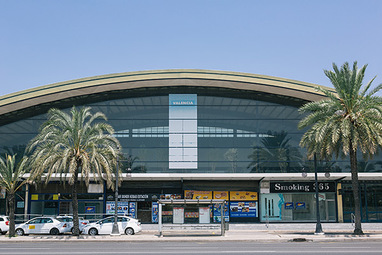
The high-speed train station offers AVE trains to Madrid, Cuenca, Seville and Cordoba.
Once in the city, you have many options to explore the area, either on the underground railway network or city buses, which are well-connected and with fluid timetables, or by bicycle. You can also take advantage of the Valencia Tourist Card, a combined card that offers free urban public transport and discounts in some museums, leisure establishments, shops and restaurants.
ALTERNATIVES
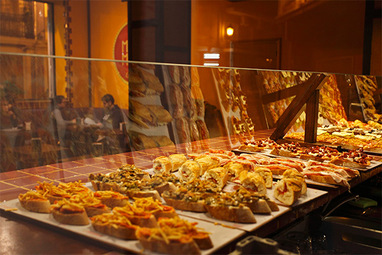
When night falls, the moon of Valencia and its agreeable temperature tempt you out to dine or to enjoy any of the many leisure activities in the city: cinema, theatre, dance, music… as well as bars, cafeterias, restaurants, dance halls, etc., with something for everyone. The El Carmen neighbourhood, in the old part of the city, has become the best-known area for nightlife. And, next to the sea, when the good weather begins, the most chic area at night is to be found at Marina Real Juan Carlos I, the base of the America’s Cup and the Formula 1 Grand Prix. The perfect area to enjoy a drink to the sound of the breaking waves.
And to celebrate the city’s most international festival, you cannot miss the Fallas. You will vibrate with the mascletá firecracker show, you will be moved by the Ofrenda, or Offering, and laugh with the satire and humour of over 400 fallas monuments (cardboard and papier-mâché statues), that decorate the streets and plazas of the whole city. The Fallas await you with spectacular firework shows, rock concerts and popular dances in every corner of the city.
FLAVOURS
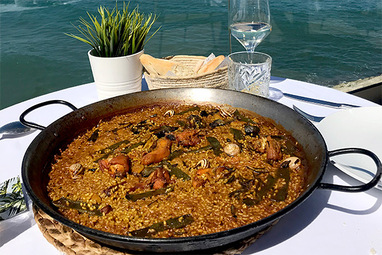
The gastronomy of Valencia is varied, natural and traditional. Fruit and vegetables from its fertile lands, together with fresh fish and shellfish, are the main ingredients of this exquisite Mediterranean cuisine.
But the star of most dishes is rice prepared in many different ways, with paella, an internationally renowned flagship dish, standing out, made with chicken and rabbit, bajoqueta (green beans) and garrofón (lima beans). Other traditional dishes which you must not miss are arroz al horno (baked rice), arroz a banda (with fish), black rice (with squid in their ink) and arròs amb fesols i naps (a rice stew with beans and turnip) or fideuá (with noodles instead of rice).
DON’T MISS

Enjoy the Valencian street cafes in the city centre. Sit down and enjoy an excellent horchata, a refreshing drink made with a plant that is only cultivated in Valencia: the chufa, a type of tigernut. Accompany it with the traditional “fartons”, a sweet, glazed sponge cake, and spend a Mediterranean evening in the city centre. You can continue your visit to the city’s shops where tradition and handicrafts merge with modernity and make Valencia a cosmopolitan city with an intense commercial life.
To buy the typical products of the land and the sea of Valencia, come to the Central Market. And if you prefer, you can remember Valencia by its great artisan tradition, especially its ceramics. The town of Paterna is famous for the socarrats (decorated ceramic plaques) and for its ornamentation in green and purple. The hand-painted fans, with ribs carved in ivory or exotic woods, and the art of silk working, seen in the handicrafts of the Fallas and grand liturgical clothing, are other traditional objects to be found in the street markets. Here you will find the greatest variety of items, from clothes to antiques. These markets, held in the streets only in the mornings, travel from district to district in the city over the course of the week.


